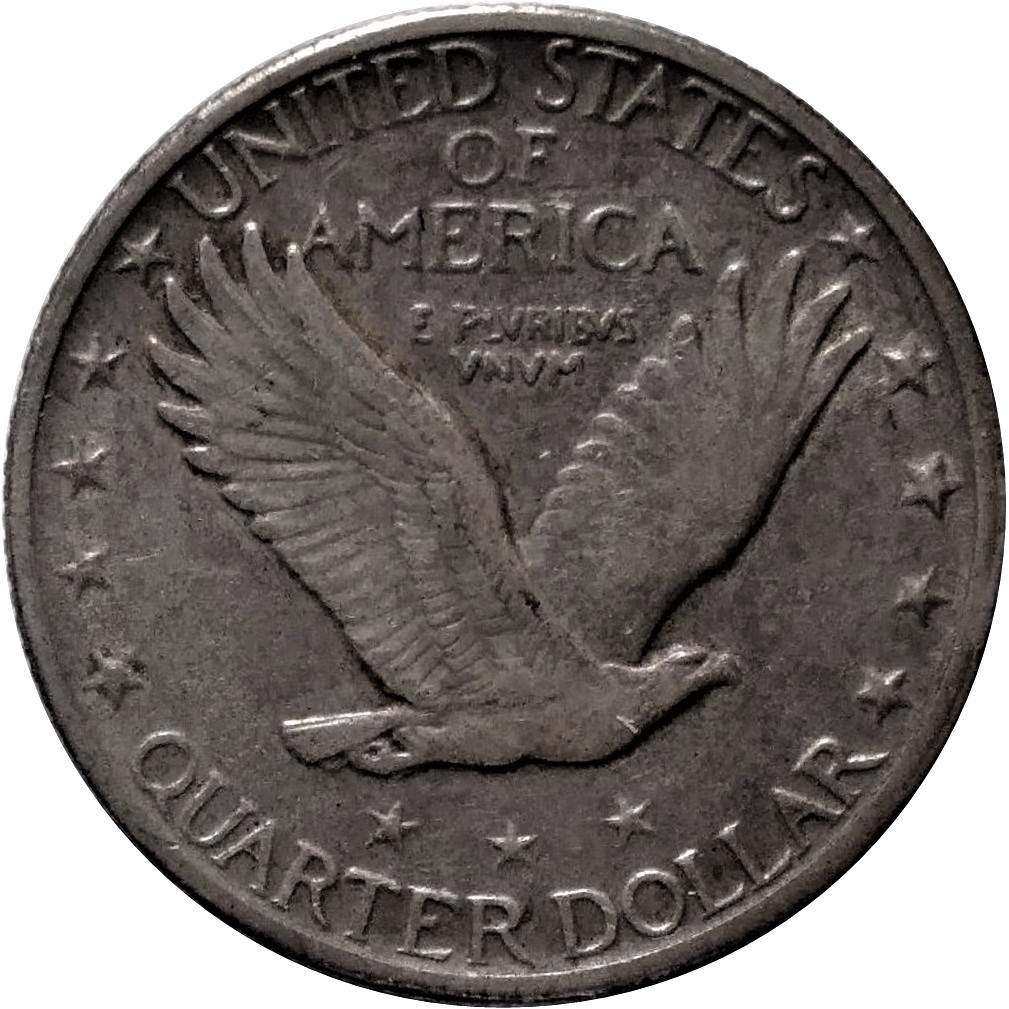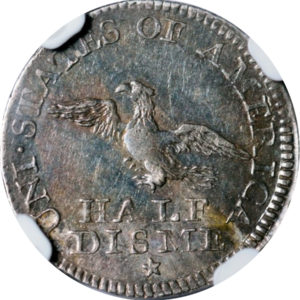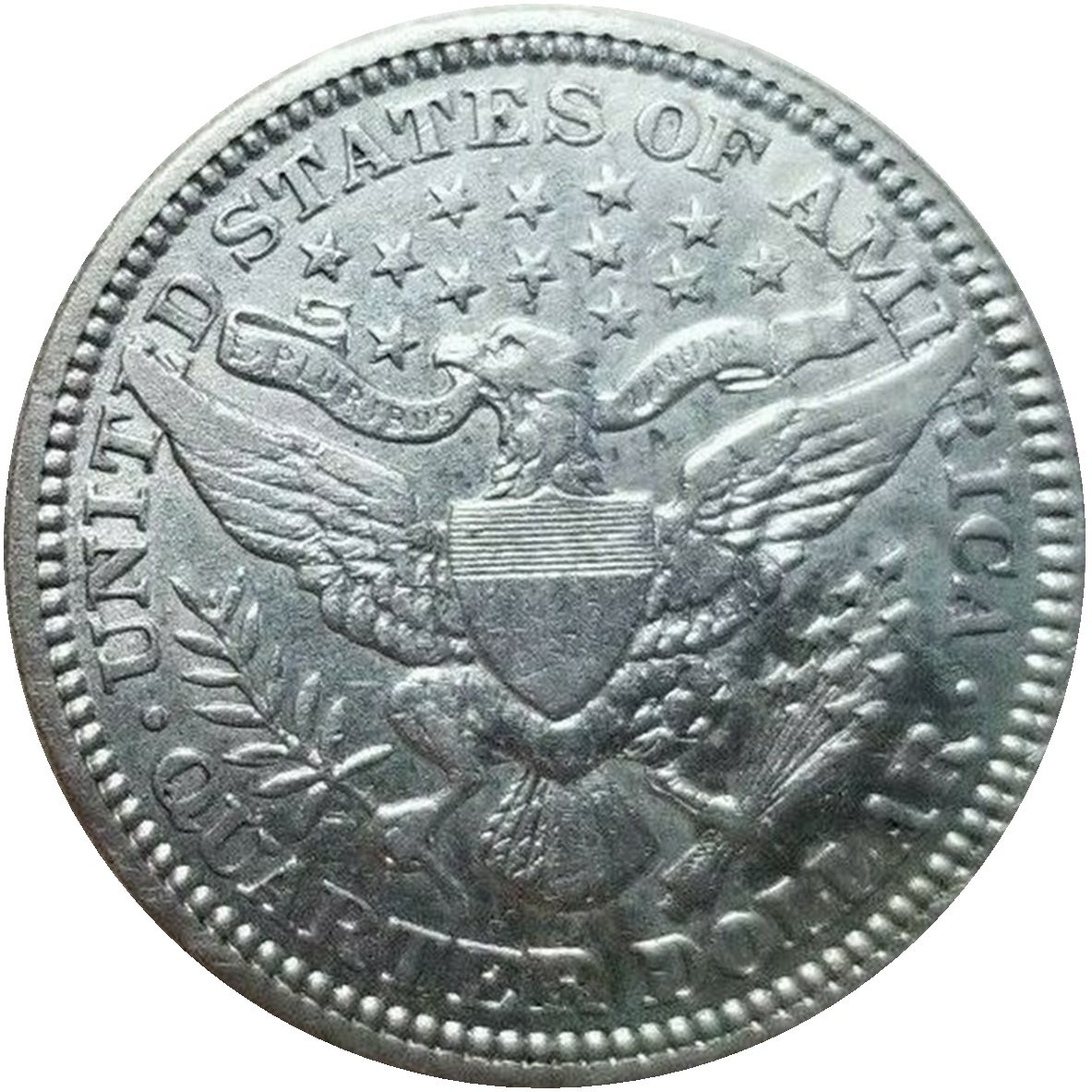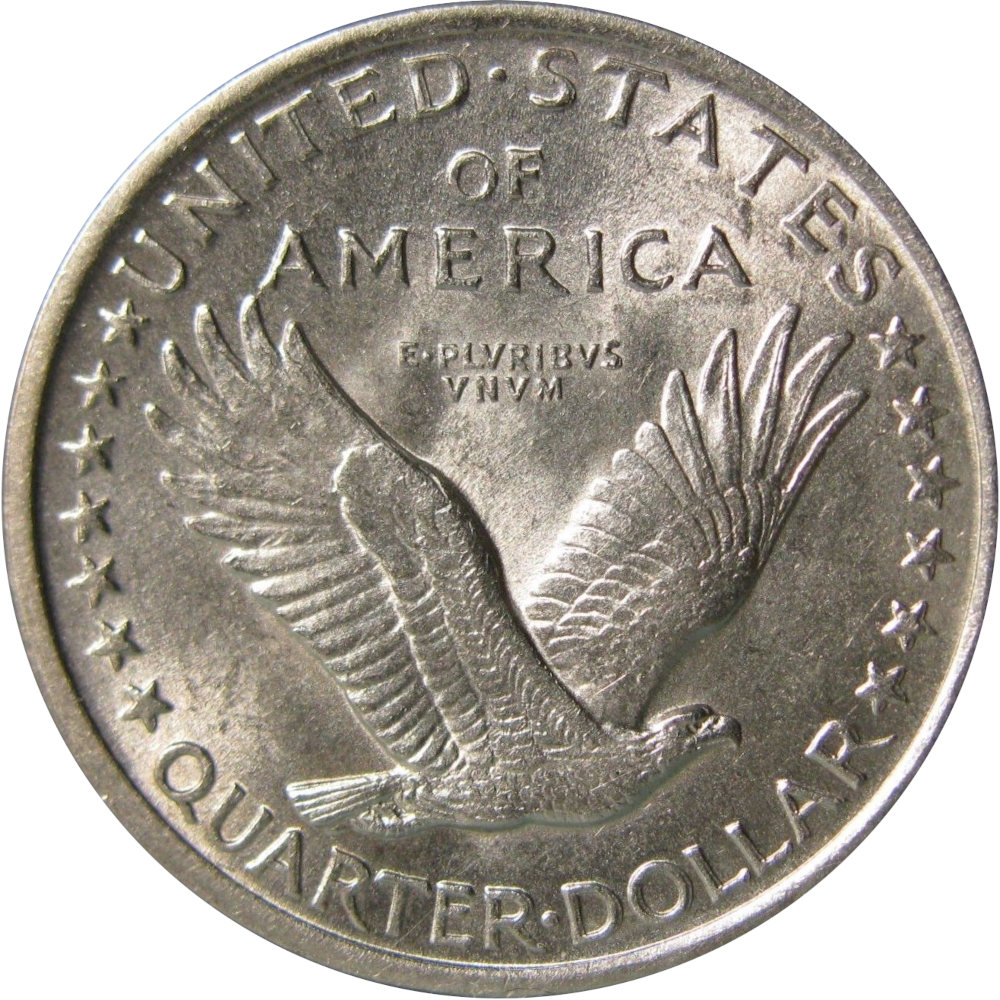1796 25c Draped Bust Quarter Small Eagle NGC MS64. High 6 Variety, Browning-2.
This was the first two-bit coin officially minted by our beautiful nation. As many of you know, it is a one year type coin with the small eagle reverse designed by little known John Eckstein and the only U.S. quarter minted in the 18th century. Note the beautiful lack of weight adjustment/filing marks on this coin, which are often found in many other examples of this issue.
When this quarter was issued during George Washington’s last full year as President, it thwarted Thomas Jefferson’s hopes of decimalizing U.S. coinage and issuing his preferred 20 cent coin. The Spanish 2-bit or two reales coin was the most widely circulating and popular silver coin at the time this coin was issued and was a quarter of the Spanish silver 8 reales coin which was about equivalent to the U.S. dollar in commerce.
The Philadelphia Mint coined 5,894 quarters during the winter and spring of 1796 with deliveries on April 9, May 27, and June 14 and an additional 252 coins on February 28, 1797. The 6,146 coins were minted with two obverse dies and one reverse die. Research indicates that about 700 specimens survive. NGC and PCGS have graded 510 pieces in all grades with an average grade slightly below VF30. This is the Browning-2 (B-2) variety, struck with the 2nd obverse die exhibiting the “High 6” placement of the last digit of the date. The B-2 variety shows the 6 in the date almost touching the bust of Liberty. The B-2 variety is slightly more common at R3 than the B-1 variety which clocks in at R4.
According to Heritage Auctions numismatic staff: “Modern research into die states shows that the Browning-2 quarters, with the High 6 date position, were the first coined, adding to the importance of this coin.” This cements that the B-2 1796 quarters were indeed the coins minted with the first Mint die pair to produce the 25c denomination.
The late Walter Breen, who as well as being one of the greatest numismatic figures of the 20th century, was unfortunately a convicted serial child molester who defended the despicable practice and died in prison in Chino, CA [the coin industry that still uses his coin reference system extensively tries to keep this very quiet], wrote in his Complete Encyclopedia of U.S. and Colonial Coins about the 1796 quarters that: “The weakness at eagle’s head is characteristic of the design and is not to be attributed to imperfect striking.“













